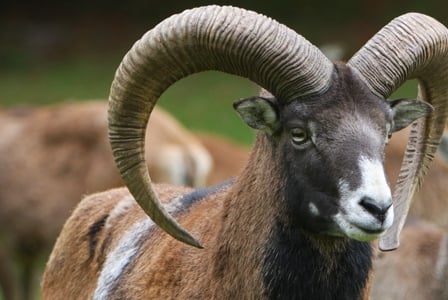
If your toes are snug within wool socks and you received yet another itchy sweater over the holidays, then you have mouflons to thank!
If your toes are snug within wool socks this winter and you received yet another itchy sweater from your great-aunt over the holidays, then you have mouflons to thank for that! So kick back, cast off that itchy sweater, and learn about them on this Wildlife Wednesday.
Habitat
These grass munchers can be found grazing in arid grasslands and fields in the Middle East and parts of Asia. Depending on the subspecies, they can be found anywhere from India to Turkey.
Trivia
- The males of this notoriously sheepish species have a proud rack of thick horns, though females of most subspecies also sprout a set of much smaller horns on their heads. Males and females also have different shades in their coats.
- If you’re happy that you have wool socks to keep your toes warm this season, then you have mouflons to thank—domestic sheep, with their thick and fluffy wool coats, share a common ancestor with these not-so-woolly herbivores.
- Sheep, wild sheep … There’s not too much of a difference, right? Historically, that’s what researchers thought. As a result, some subspecies are considered to actually be the same by some, and research occasionally lumps mouflons and their domestic family members into a single category.
Why are they threatened?
Poaching—especially in Armenia, Turkmenistan, Uzbekistan, and other countries along the northern edge of their range—is a major threat and has contributed to a decline in the animals’ population. Competition with domestic livestock at foraging grounds and watering holes is also a concern.
Other threats include the transmission of diseases from domestic animals to mouflons, habitat degradation caused by forestry and agriculture, and pressure from urbanization.
Fortunately, mouflons are protected by law in several of their home countries, and regulations either banning or limiting the hunting of these horned herbivores have gone into effect over the past few years in Afghanistan, India, Iran, Tajikistan, and others.

















